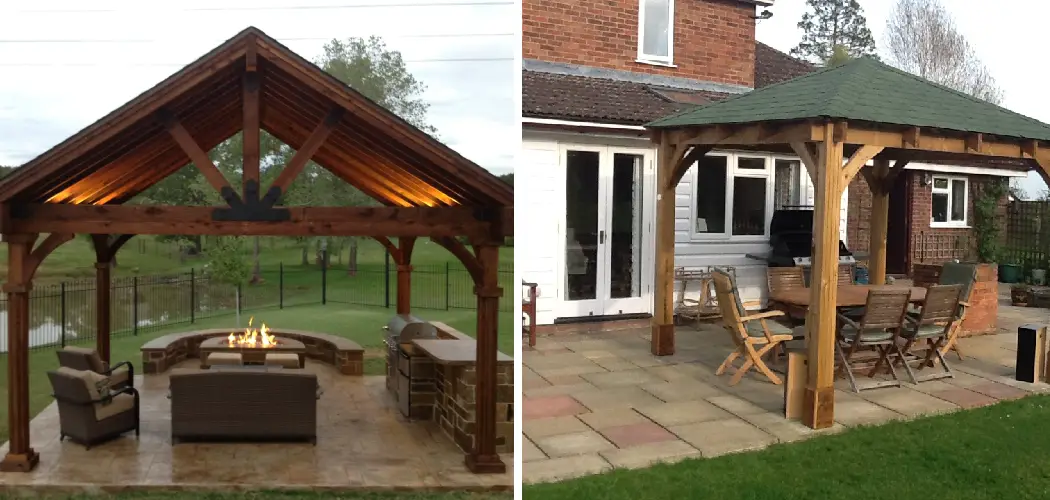Anchoring a gazebo to concrete is a crucial step in ensuring its stability and durability, especially when it’s placed in an outdoor area with concrete flooring. A securely anchored gazebo not only withstands external elements like wind and weather but also provides a safe environment for occupants.
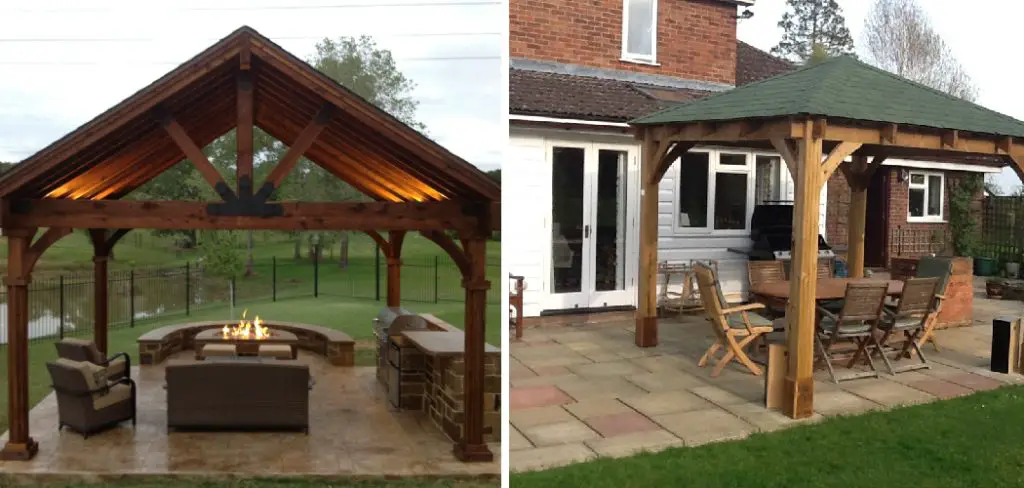
In this informative guide on how to anchor gazebo to concrete, we’ll delve into the essential steps and methods to effectively anchor a gazebo to concrete.
From selecting the appropriate anchoring tools and materials to correctly positioning and securing the gazebo, we’ll provide a detailed walkthrough to help you achieve a sturdy and reliable anchoring for your gazebo. Let’s begin this journey of enhancing the structural integrity of your gazebo and enjoying a secure and enjoyable outdoor space.
The Importance of Anchoring a Gazebo to Concrete
Anchoring a gazebo to concrete is an important step in ensuring the longevity and safety of your outdoor structure. Without proper anchoring, even a light breeze can cause the gazebo to become unstable or topple over, potentially causing injury or damage. Fortunately, there are several easy steps you can take to anchor your gazebo securely to the concrete foundation.
The first step in anchoring your gazebo to concrete is to identify and drill holes into the concrete where you will be placing the anchors. This should be done before assembling your gazebo, as it will make it easier to set up correctly and ensure a secure bond with the concrete.
Once you have drilled your holes, you should use a hammer and masonry nails to insert the anchors into the same holes. You may need to tap them in with a rubber mallet or other tool, depending on the type of anchor you are using.
Once your anchors are in place, you can begin attaching the gazebo frame to them. Most gazebos come with hardware for this purpose, usually in the form of screws and bolts. Be sure to use a drill with a heavy-duty bit that is recommended for concrete. Alternatively, you can cover the anchors with an epoxy adhesive for a more secure bond.

Determine the Ideal Location for the Gazebo on the Concrete Surface
Once you have decided on the size of your gazebo, it’s time to determine where it will go. If you are anchoring the gazebo to concrete, there are a few important factors to consider in order to ensure a secure anchor and prevent unwanted movement.
When choosing the location for your gazebo, make sure the ground is level and solid. You don’t want your gazebo to be off balance or move around when in use. Also, make sure the area you’re placing it on is free of debris and any other obstructions that could interfere with its installation.
Once you have identified an appropriate location, measure the size of the post holes that will be used to anchor the gazebo. This measurement should be taken from the base of the gazebo where it meets the concrete surface, to the top of each post hole. This will give you an accurate indication of how deep to dig your post holes in order for them to securely anchor your gazebo.
10 Steps How to Anchor Gazebo to Concrete
1. Gather the Necessary Supplies:
Before you begin anchoring your gazebo to concrete, make sure that you have all of the necessary supplies. You will need a drill, concrete screws, anchors, and a level. Choose concrete screws that are specifically designed for the material of your gazebo.
This will ensure that you get a good grip and don’t have to worry about it coming loose over time. Additionally, if your gazebo is heavy, make sure to choose concrete anchors that can support its weight.
2. Measure and Mark the Location:
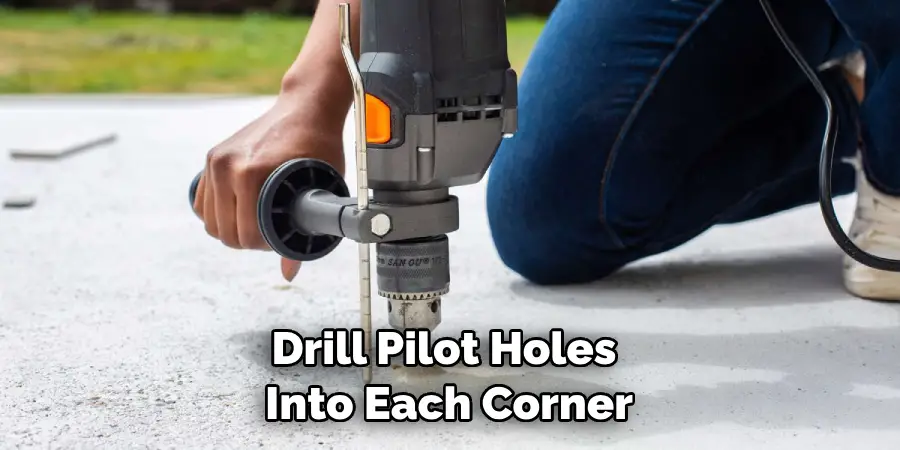
Once you have gathered all of your supplies, measure out where you would like to place your gazebo and mark it with chalk or tape. Make sure that the location is level by using a level before continuing with the next step. It is important to get this step right, as any errors in the measurement and mark will lead to an uneven gazebo or an improperly placed anchor.
3. Drill Pilot Holes:
Using your drill, carefully drill pilot holes into each corner of the gazebo where you would like to attach it to the concrete surface. Be sure to use a bit that is slightly smaller than the size of your concrete screws so that they fit properly in the holes.
4. Insert Anchors:
Using an anchor setting tool or hammer, insert anchors into each pilot hole until they are flush with the surface of the concrete. Make sure that they are firmly secured before continuing with the next step.
5. Place Concrete Screws:
Place one concrete screw into each anchor and tighten them securely using a drill or screwdriver until they are flush with the surface of the concrete. Be careful not to over-tighten them as this may cause damage to both the anchor and screw threads.
Once the screws are in place, use a level to check that all anchors are at the same height and then insert the eye bolts into each anchor. Tighten the eye bolts with an adjustable wrench and make sure they are securely fastened.
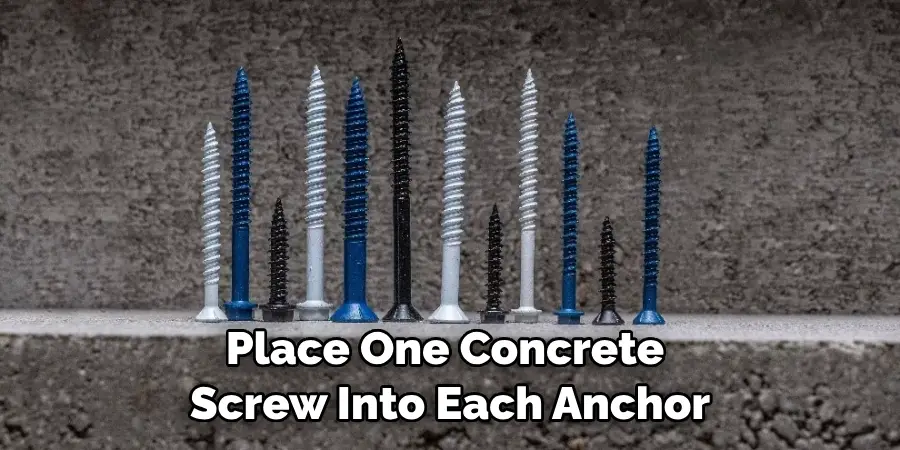
6. Level Gazebo:
Once all four screws are secure, use a level to ensure that your gazebo is level on its base before moving on to step 7. If it is not level, adjust one or more of the screws until it is even on all sides before proceeding further.
7. Attach Support Brackets:
If your gazebo has support brackets for additional stability, attach them at this time using either screws or bolts depending on what type was provided with your model of gazebo. Make sure that these are also tightened securely so that they do not come loose during windy conditions or other weather events which could cause damage to both people and property if left unchecked.
8. Use Caulk Around Fasteners:
To further secure your fasteners from coming loose due to weathering or vibration caused by windy conditions, apply caulk around each fastener after tightening them securely into place. This will help keep moisture out while also providing an extra layer of protection against loosening due to vibration caused by windy conditions.
Make sure to use an outdoor caulk designed for concrete surfaces, and follow all the instructions provided on the product packaging before applying. After allowing the caulk to cure completely, you’ll have the peace of mind knowing your gazebo is secured with a secure base that won’t budge.
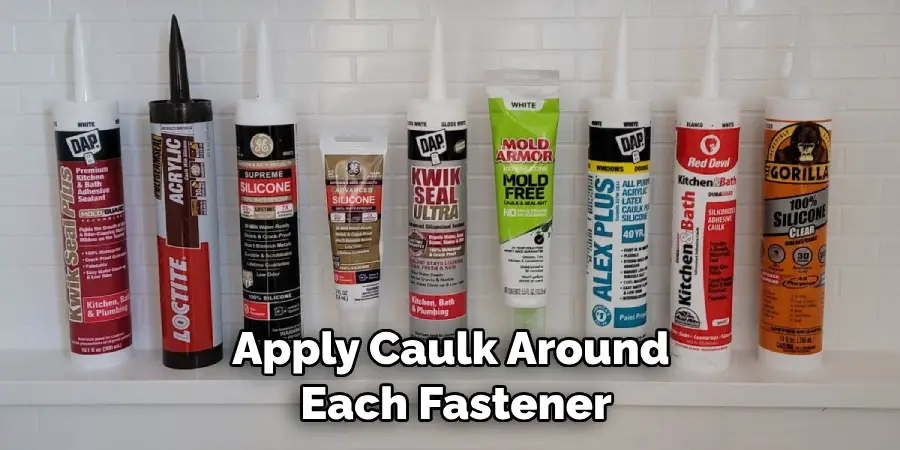
9. Install Roofing Material:
Depending on what type of roofing material you wish to install onto your gazebo (if any), now is when you should do so.. Make sure that it is installed correctly according to the manufacturer’s instructions in order for it to be effective against water infiltration into your structure. Remember to use the necessary tools and safety equipment when working with material that could pose a danger.
10. Enjoy Your Gazebo:
After completing all the steps above, now you can enjoy sitting under your gazebo knowing that it has been securely anchored in place! You can entertain your guests, take a nap in the shade, or just enjoy some peace and quiet. Make sure to check all of the bolts periodically to ensure that the anchors are still secure and tight.
Things to Consider When Anchoring Gazebo to Concrete
Before embarking on the anchoring process, there are a few things to consider.
- Type of Concrete – Gazebo anchors need to be chosen depending on the type of concrete used in your project. If you have a poured concrete slab, anchors like wedge and sleeve anchors will work best. If you’re dealing with a pre-cast concrete slab, you should use drop-in anchors.
- Weather Conditions – The weather conditions should also be taken into account when anchoring a gazebo to concrete. If you’re installing your gazebo in an area with strong winds or other extreme weather conditions, you may need to use longer and stronger anchors to ensure that your gazebo is securely anchored.
- Anchor Size – The size of the anchor also matters when anchoring a gazebo to concrete. Make sure that you choose an anchor that is appropriate for your project and the type of concrete you’re dealing with.
- Tools – You’ll need to make sure that you have the right tools for the job. Hammer drills and masonry bits are necessary when anchoring a gazebo to concrete, so make sure that you have them on hand before starting your project.
Safety Precautions for Anchoring Gazebo to Concrete
Anchoring a gazebo to concrete is an important and necessary task if you want your structure to be secure. Before beginning, it’s essential to understand safety precautions that should be taken into consideration in order to ensure the best results.
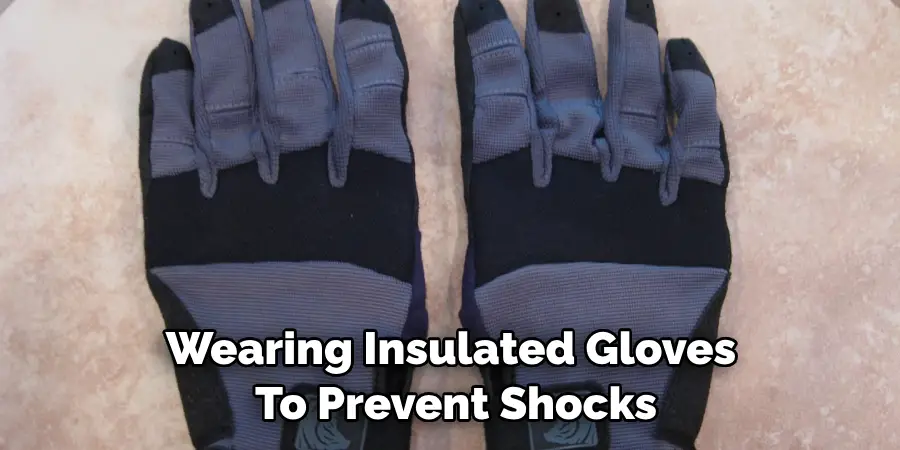
Make sure the area where the gazebo will be anchored is free of debris and any other objects that could interfere with the process. Wear protective gear such as gloves, safety goggles, and a hardhat to protect yourself from any potential hazards. Additionally, it’s important to wear closed-toe shoes to protect your feet in case of dropped items or messes created during the anchoring process.
When working with concrete or cement, it is important to check for any exposed rebar. If there is any exposed rebar, you will need to use special hardware or drilling techniques to secure the gazebo.
When working with power tools, be sure to take extra precautions by disconnecting the power source and wearing insulated gloves to prevent shocks from occurring. Additionally, when using concrete anchors ensure that they are rated for outdoor use in order to withstand the elements.
Conclusion
Securing a gazebo to concrete helps add protection from harsh weather and sustained winds. With the right parts and knowledge, you can easily anchor your gazebo to concrete and maximize it’s longevity.
Remember to use heavy-duty epoxy adhesive, drill the base of the gazebo into the wet concrete, or use galvanized lag screws with expansion shields. Above all be sure to appreciate your project after it’s complete by sitting back and enjoying its beauty at your yard!
Now you should have a better understanding of how to anchor gazebo to concrete and be proud of yourself for taking on such an important task. If you require more information or need additional help, please do not hesitate to contact us here, where our team is ready and eager to support you every step of the way.

